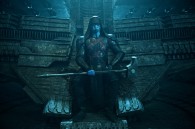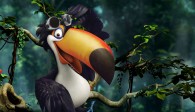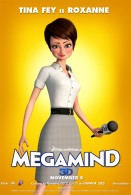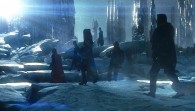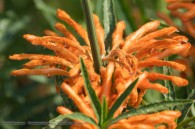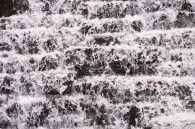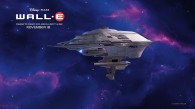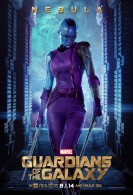Galactic Collisions Wallpaper
Free and Legal Music Downloads! Act Now!
The larger and more massive galaxy is cataloged as NGC 2207 (on the left in the Hubble Heritage image), and the smaller one on the right is IC 2163. Strong tidal forces from NGC 2207 have distorted the shape of IC 2163, flinging out stars and gas into long streamers stretching out a hundred thousand light-years toward the right-hand edge of the image. Computer simulations, carried out by a team led by Bruce and Debra Elmegreen, demonstrate the leisurely timescale over which galactic collisions occur. In addition to the Hubble images, measurements made with the National Science Foundation’s Very Large Array Radio Telescope in New Mexico reveal the motions of the galaxies and aid the reconstruction of the collision. The calculations indicate that IC 2163 is swinging past NGC 2207 in a counterclockwise direction, having made its closest approach 40 million years ago. However, IC 2163 does not have sufficient energy to escape from the gravitational pull of NGC 2207, and is destined to be pulled back and swing past the larger galaxy again in the future. The high resolution of the Hubble telescope image reveals dust lanes in the spiral arms of NGC 2207, clearly silhouetted against IC 2163, which is in the background. Hubble also reveals a series of parallel dust filaments extending like fine brush strokes along the tidally stretched material on the right-hand side. The large concentrations of gas and dust in both galaxies may well erupt into regions of active star formation in the near future. Trapped in their mutual orbit around each other, these two galaxies will continue to distort and disrupt each other. Eventually, billions of years from now, they will merge into a single, more massive galaxy. It is believed that many present-day galaxies, including the Milky Way, were assembled from a similar process of coalescence of smaller galaxies occurring over billions of years. This image was created from 3 separate pointings of Hubble. This desktop background wallpaper picture photo image is copyright NASA.

Galactic Collisions wallpaper - Click picture for high resolution HD wallpaper
Mac/PC Instructions:
- Click preview image above to download or view full size free desktop wallpaper.
- Right-click on full size image and select option to set as wallpaper or desktop background/picture.
iPhone/iPad Instructions:
- Tap preview image above to display full size wallpaper image for the iPhone/iPad.
- Touch and hold your finger on the image until the side-up menu appears and select "Save Image".
- Go to Settings and select Wallpaper.
- Select either the lock screen or springboard background.
- Select "Camera Roll" and find the image you saved in step 2 and tap it.
- Move and scale the image as desired, then tap "set" to set iPhone/iPad wallpaper background.
License and Terms of Use
- These pictures are NOT stock photos and may not be used as such.
- Wallpaper images are licensed for personal use as desktop backgrounds ONLY.
- All commercial use of these images and pictures is prohibited.
- These desktop backgrounds and wallpapers may NOT be reproduced, retransmitted, or redistributed in whole or in part, in any form or by any means, without express written consent.
- Wallpaper may NOT be altered or modified.
- The watermark on the picture may NOT be altered, removed or obscured.
